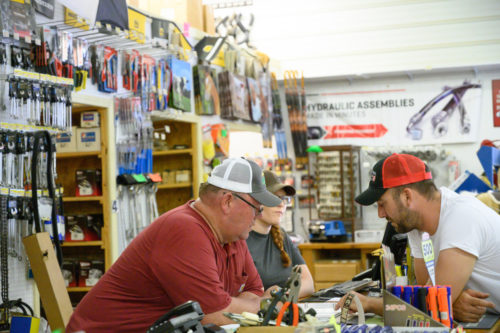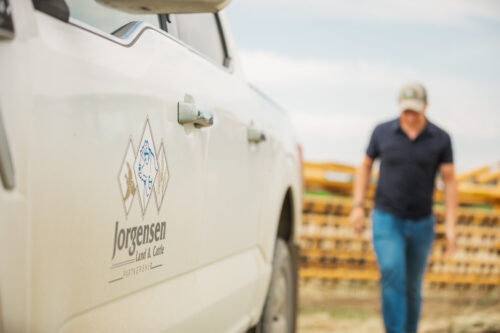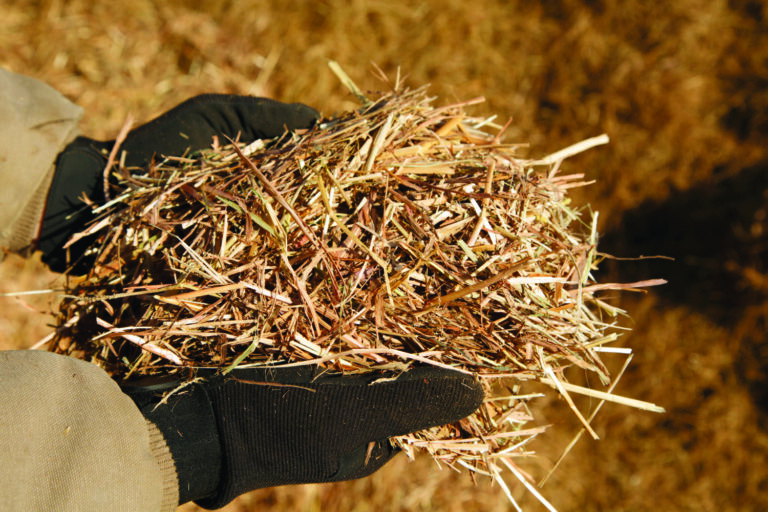
Importance of Testing Hay Quality
July 2023
Just as properly cutting and baling hay is an art and a science, so is ration formulation for livestock. As a hay producer, testing hay to determine the nutritional value can be a small added expense, but the information gained is invaluable.
For livestock producers the quantity of hay in their stockpile is vital information, especially as the weather cools and most producers plan to feed hay through the winter months. The quality of hay is equally important as the quantity as it can vary widely based on the type of forage, soil type, fertilizer rate and the maturity of the forage at harvest.
Maturity Matters
According to University of Nebraska extension educator Troy M. Walz, the most important factor that impacts forage quality is maturity at harvest. According to research, as the plant matures fiber concentration increases, which decreases digestibility. Additionally, as maturity increases, crude protein decreases. Understanding the quality of the hay is cost effective, as it allows producers to better meet the nutritional requirements of their herd throughout the year. Many livestock producers are feeding livestock in the cold months when the class of livestock also has higher nutritional needs. Whether it is gestating or lactating females, or young livestock that are experiencing high growth periods, both groups require a higher-quality hay. Conversely, armed with key nutritional information a producer could potentially reduce costs by feeding lower quality hay to livestock with lower nutritional needs, like open cows and mature bulls.
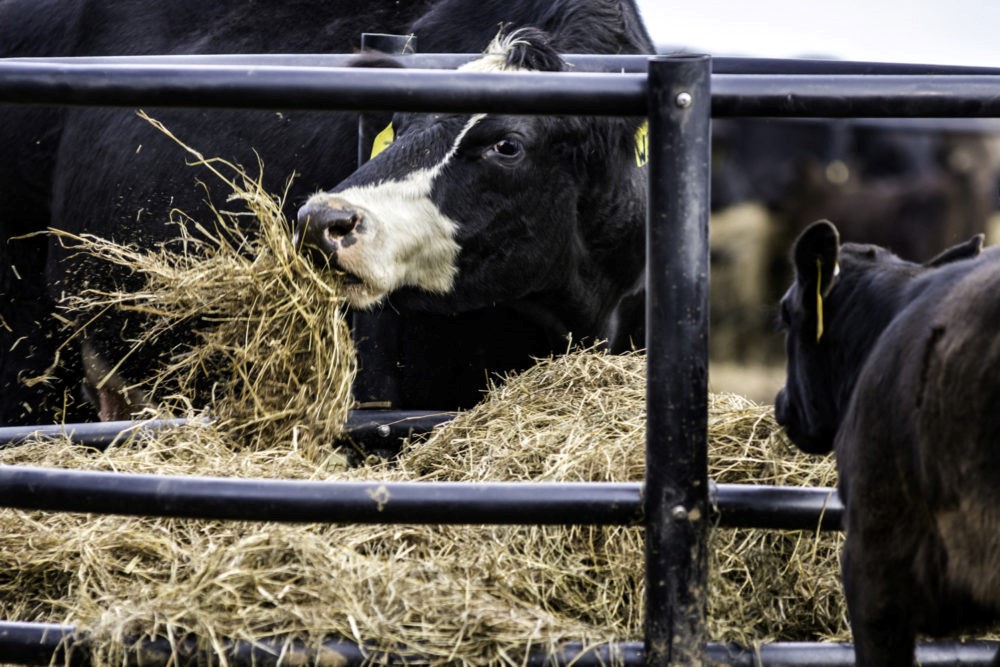
Steve Niemeyer, a UNL extension educator specializing in beef cattle, said the most common test is the Near Infrared Reflectance Spectroscopy (NIRS) or Infrared test. Nitrate tests are also available and are even more important during dry years, in summer annuals, or when high nitrogen weeds are present, like kochia or pigweed. He said high nitrate hay can cause abortions in bred females but, after studying test results, it can be diluted and fed to open cows or bulls.
“The more mature the plant gets and starts putting on that seed head, we tend to see a drop in nitrates, but we can’t ever guarantee that because if the nitrogen was high in the soil, it could be picking that up,” Walz said. “Testing is what we need to do because it’s truly so inexpensive to test for nitrates compared to losing one animal.”
Test Basics
The NIRS or infrared test is a dry test performed on most forages. The nitrate test is separate and there is also a wet chemistry test, meant for mixed feeds. The infrared test, though, is most common and provides producers with the results necessary to make informed ration adjustments. The time to test, according to Niemeyer, is before the hay is fed.
With results in hand, Niemeyer said the nutritional information most important to livestock producers is the Crude Protein (CP) and Total Digestible Nutrients (TDN), which is energy. Using these numbers, livestock producers can balance rations to better meet nutritional needs of livestock and to increase efficiency by not overfeeding or underfeeding.
In Niemeyer’s experience, nutrient concentration in hay can vary widely. Protein in alfalfa hay can range from 10% to 25% on a dry matter basis and grass hay will contain 4% to 18% protein. With test results in hand, producers can avoid overfeeding or underfeeding certain nutrients.
Proper Sampling Ensures Better Results
There’s little doubt the hay producers do their best to perfectly time forage haying, but they are certainly at the mercy of many external factors that cannot be controlled. To regain some of that control on the ration side, a producer can start by gathering a representative sample. The lot, or sample area, to test should be from a single field at the same cutting and maturity, and should be similar in plant type, soil type, and variety.
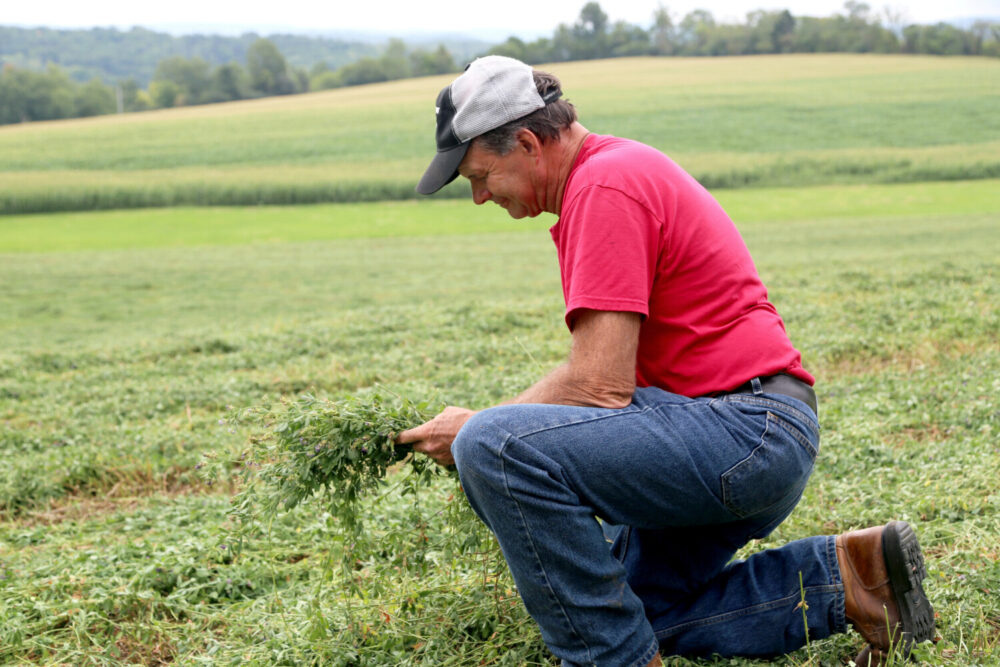
Once the hay in the lot is cured — 17 to 21 days after baling — the baled hay can be sampled using a probe, which is often available from local extension offices. A “grab” sample is not representative of the lot and is oftentimes rejected by a lab. Niemeyer recommends randomly sampling 15 to 20 bales to comprise a lot, based on the total number of bales present per field. Each lot will be submitted per test, with most labs charging about $20 per test.
Niemeyer said for large round or square bales, the probe should penetrate at least 18 in (46 cm) into the curved side of the bale and have an internal diameter of at least 3/8 in (.95 cm). Collect one sample from each bale by coring straight in from the center of the end of square bales and from the wrapped circumference of round bales. Place the entire sample into a plastic bucket and mix around and then fill a plastic ziplock bag for transport. For chopped or ground hay, collect about 10 small samples during the grinding process and place them in a plastic bucket for mixing, then place the sample into a ziplock bag for transport. If you are sampling a pile, take about one-fourth of the samples from the top half of the pile and the rest from the lower half.
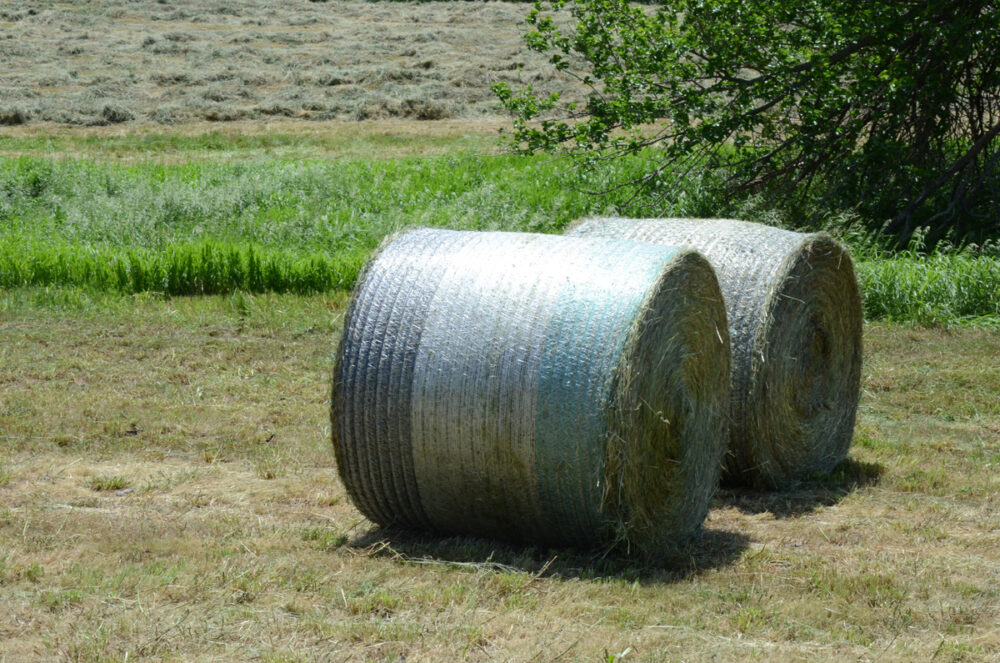
Just as weather and growing conditions can vary wildly from year to year, so can the nutritional value of forages. However, test results based upon properly sampled hay can be the first step in accurate and efficient ration formulation. For more information on hay testing and lab locations, contact your local extension service or Vermeer.
Information noted above was gathered from a third party who was advised his/her experience might be featured in marketing materials. This article contains third-party observations, advice or experiences that do not necessarily reflect the opinions of Vermeer Corporation, its affiliates or its dealers. Individual results may vary based on care and operation of machine and crop and field conditions, which may adversely affect performance.
Vermeer Corporation reserves the right to make changes in engineering, design and specifications; add improvements; or discontinue manufacturing at any time without notice or obligation.
Equipment shown is for illustrative purposes only and may display optional accessories or components specific to their global region.
Please contact your local Vermeer dealer for more information on machine specifications.
Vermeer and the Vermeer logo are trademarks of Vermeer Manufacturing Company in the U.S. and/or other countries.
© 2023 Vermeer Corporation. All Rights Reserved.



